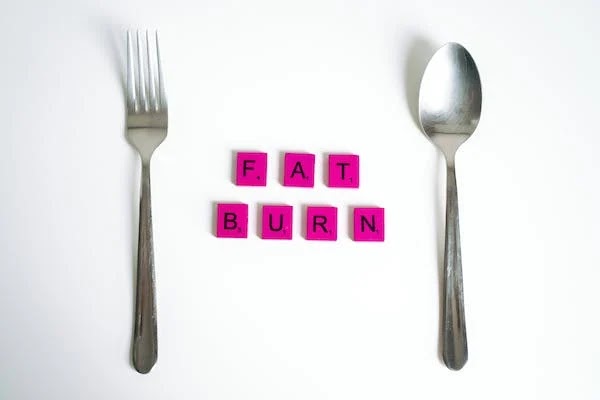How to track your progress with weight loss percentage ? What percentage of weight loss is considered healthy ? Methods for calculating weight reduction in percentage
Standing on the scales can feel like the ultimate moment of truth. You've been doing all the right things and expect those efforts to show on the scale, only to end up staring at the number in disbelief. Seriously?! How can this happen? Sometimes the number still doesn't go down even though your body is changing. This is where percentage weight loss to determine your progress is a much better idea.
Measuring your body, especially your waist and hips, can summarize your great progress (after all, hips don't lie!). These data points accurately reflect your weight loss, determine whether your diet modification techniques are effective, and evaluate whether your physical efforts are on track. In addition, it can make you work harder or inspire you to continue working towards your goals.
You can track your weight loss in several ways. These include measurements of weight, waist or other body parts, body mass index (BMI) and body fat percentage. However, take a closer look at this final measurement, as this article is about ways to calculate weight loss as a percentage.
Methods for calculating weight reduction in percentage
Rather than counting calories or kilograms, it may be healthier and more manageable to calculate your weight loss as a percentage. This is to see how much weight you have lost from your starting weight. What's more interesting is that this approach won't scare you like the almighty scale. So yes, it's time to break up with the scale.
You can calculate weight changes as a percentage using the following methods.
Use the individual weight loss percentage formula
Comparing yourself to others will make weight loss more challenging because it is highly customized. Comparing yourself to others is rarely motivating, but it can be discouraging because people lose weight at different rates and by different amounts. Calculating percentage loss has the advantage of allowing you to compare yourself only to yourself.
Divide the amount of weight loss (in pounds or kilograms) by your starting weight into equal units. Then multiply the result by 100 if you would instead find out the percentage of weight loss yourself or want to know how. (weight lost/starting weight) x 100.
Here's an example: 10 pounds / 180 pounds x 100 = 5.5% of initial body weight loss. A person who was 180 pounds when they started has now lost 10 pounds. According to this figure, they lost 5.5% of their body weight. Better than seeing 170 pounds on the scale, don't you think ?
Use the chart to determine the percent weight loss
You can track your progress by tracking your weight loss percentage weekly in spreadsheets like Microsoft Excel or Google Sheets. Additionally, working with a health care professional is recommended as they can advise you on weight loss goals to achieve a moderate weight and track progress.
You may experience short ups and downs when trying to lose weight. But you can understand how your weight loss is progressing by tracking the % of your weight loss in the table.
More Read : Mistakes in diet control ! || Avoid these 7 mistakes and stay healthy!
You don't need to find out your weight loss percentage every day. Instead, it's a reminder to align yourself with who you were at the beginning of this journey. Are you better than you were when you started? If so, you win the game.
Use an online body weight percentage calculator
The easiest and most direct way to find out how your body weight percentage has changed is to use one of the many online body weight calculators.
To see your body weight change as a percentage, enter your starting and current weight, select pounds or kilograms, then click the "Calculate" button. It is convenient for keeping accurate records and quickly checking the percentage of weight loss.
Body fat percentage (BFP) is also a fantastic indicator to attempt if you want to feel and look fit. After all, the first step in any effective weight loss quest is determining how much body fat you need to shed. No matter how much weight you've lost, being less fit is more likely if your body fat percentage is larger.
Note for You
Weight loss percentage shows how much you've lost from your starting weight. Calculating weight loss as a percentage instead of tracking pounds or kilograms is an empowering way to track your progress. Record every percentage, then review once a week or once a month. But remember that your appearance has nothing to do with any given number.
What percentage of weight loss is considered healthy ?
Even a moderate weight loss of 5-10% of your total body weight can benefit your health, which can lead to improvements, including lower blood pressure, cholesterol and blood sugar. It is recommended to lose 1-2 kilos every week. This strategy is likely to be more successful than trying to lose weight quickly. Depending on your current weight, this corresponds to a different percentage of your body weight.
Numerous studies demonstrate that steady weight loss is healthier and more enduring than "crash" dieting. This is due to the fact that quick weight loss lowers metabolism more than gradual weight loss. Your body will consequently adjust to burn fewer calories. You may gain weight again, frequently more than you lost, as a result of this decrease in metabolic rate, which unfortunately can linger for years.
Note for You
It's challenging to stay true to inflexible rules and guidelines, which forces you to abandon the regimen altogether. We often forget that losing weight is as simple as eating right, regularly and appropriately. And sometimes, the occasional bump in your weight loss progress can encourage you to improve those numbers.
Other effective techniques to track weight loss
Lose the weight without going crazy, as the adage goes. Over the past few years, social media platforms have provided you with a wealth of weight loss advice and tactics. However, each person has a unique body. It's worth repeating even though you've heard it before. If the most recent quick weight-loss method works for your friend, it doesn't necessarily indicate it will work for you. Without worrying about it, you can follow some empowering methods to monitor your weight loss success.
More Read : What is diet ? What are the types of diet ? What is the most popular diet ? | Diet
The scale should be thrown away because it isn't the most reliable indicator of your weight loss. A tape measure is a better option for you when you are first trying to lose weight. Measure your hips, thighs, waist, and biceps using the measuring tape. You're on the right track if your jeans start to sag and you require a belt to keep them in place.
Conclusion
A "one size fits all" weight loss plan does not exist. It's even more disheartening when the scale fails to recognize your weight loss efforts. The thing is, sometimes you have to welcome the concept of percentages. Feedback from reassessing your percentage of weight loss once a week or once a month helps indicate your progress. Like it or hate it, a balanced diet, regular exercise and better sleep are far more important than any number.

.jpg)





.webp)
